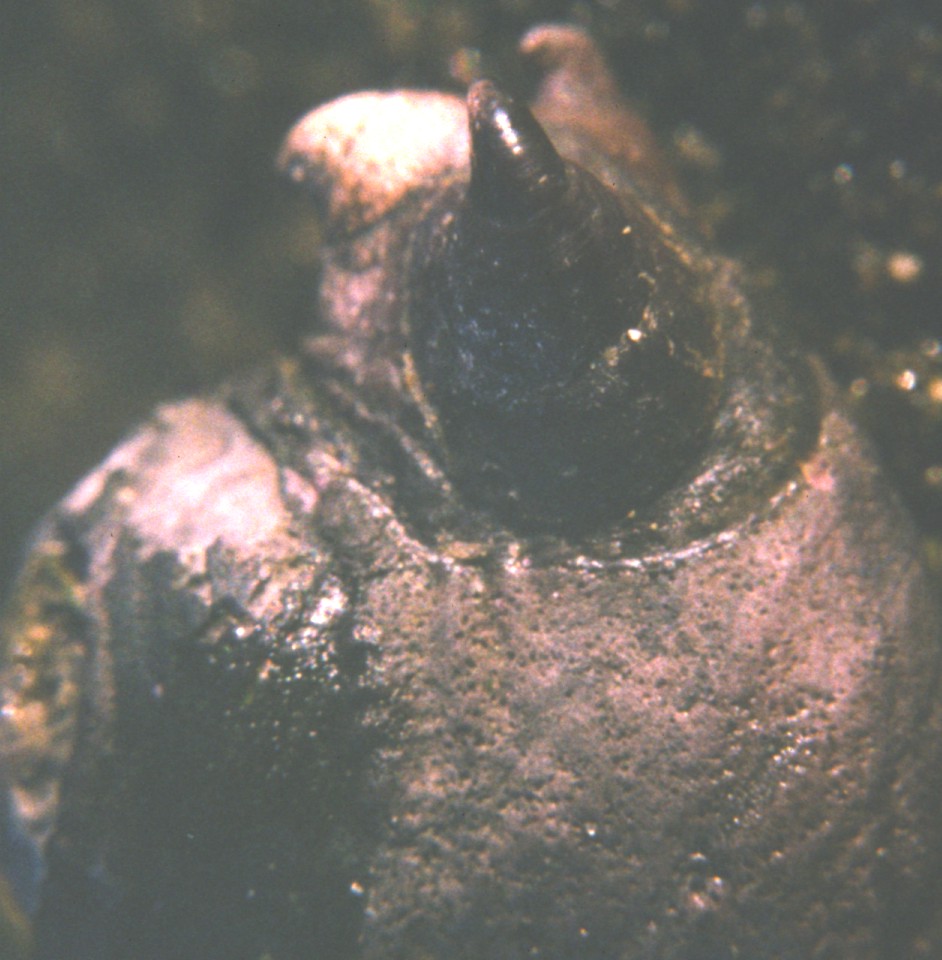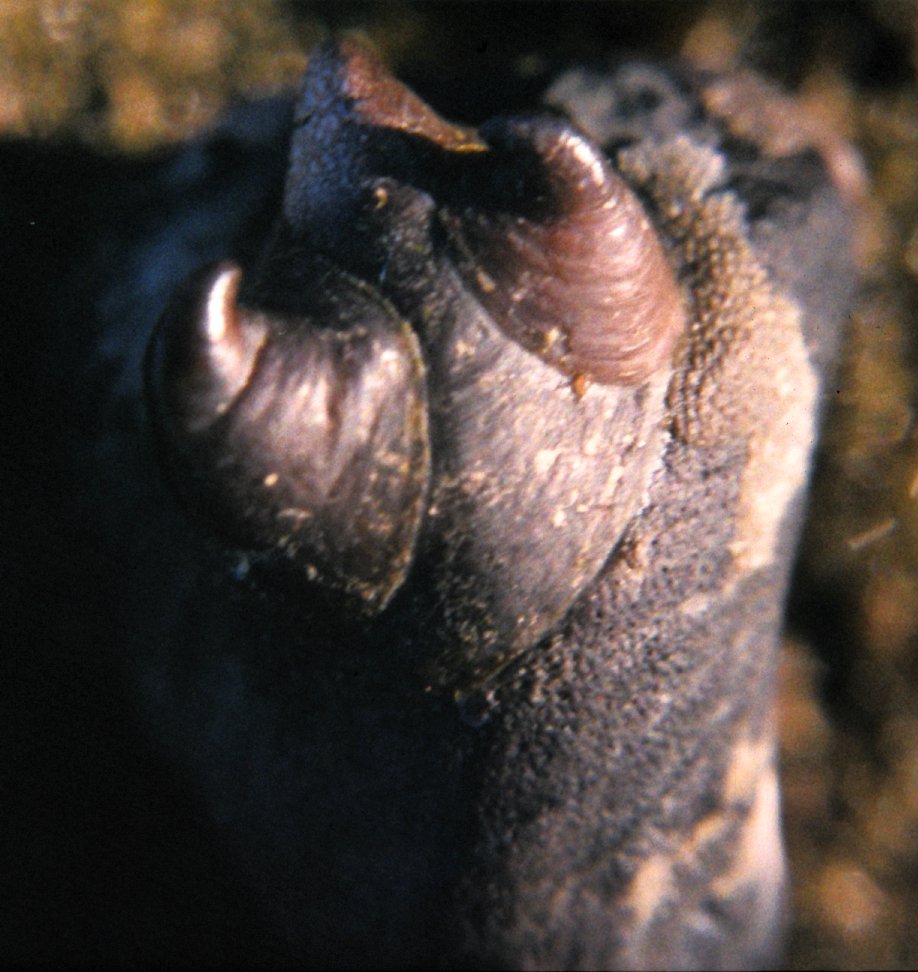Crepidula adunca Sowerby, 1825Common name(s): Hooked slipper shell, Slipper shell, Slipper limpet |
|
| Synonyms: |  |
| Phylum Mollusca
Class Gastropoda Subclass Prosobranchia Order Mesogastropoda Suborder Taenioglossa Family Calyptraeidae |
|
| Crepidula adunca: 3 males on a female on a Tegula funebralis shell | |
| (Photo by: Dave Cowles San Simeon, CA 2000) | |
How to Distinguish from Similar Species: This species is the only one in this area with a very tall, arched, beaklike, recurved apex and a brown periostracum
Geographical Range: Queen Charlotte Islands (British Columbia) to Punta Santo Tomas, Baja California
Depth Range: Mid to low intertidal
Habitat: Rocky coast, mainly on Chlorostoma funebralis (black turban, formerly Tegula funebralis) shells
Biology/Natural History: This filter-feeding species specializes in living on Chlorostoma funebralis, Calliostoma ligatum, and Searlesia dira shells. It is a protandric hermaphrodite. A newly settled individual is male. As the individual grows another (male) individual may settle on its shell, and the bottom individual becomes female. This species broods its eggs, which have direct development. The eggs are kept in capsules under the mother's shell. When the young are ready for release the mother lifts her shell 1-3 mm above the substrate and pushes them out with her head. Newly liberated young are like small adults, 1.9 mm long. They usually fall off the Chlorostoma shell and grow to about 4 mm before they find another host. A related species, Crepidula fornicata, is native to the Atlantic but has been introduced to a few areas in the Northwest with oysters.
| Return to: | |||
| Main Page | Alphabetic Index | Systematic Index | Glossary |
References:
Dichotomous Keys:
Kozloff,
1987, 1996
Smith and Carlton, 1975
General References:
Kozloff,
1993
Niesen,
1994
Scientific Articles:
General Notes and Observations: Locations, abundances, unusual behaviors, etc.:

Two male C. adunca on a female, all on a Tegula
funebralis.
Dave Cowles, San Simeon, CA May 2005
I have found large numbers of Crepidula adunca shells within kelp holdfasts on the open coast, such as at Shi Shi beach, 2007. The shells had little periostracum on the outside and so had likely been dead for some time. The holdfasts had physically attached to the external surfaces of the shells so that, if the snails had been alive, they would have been completely immobile. I am not sure whether Crepidula adunca also lives within kelp holdfasts or whether the holdfasts somehow had picked up and incorporated many of the shells. There were many other types of shells in the area but only a few species were present in the holdfasts so I suspect they were living there. I found no Chlorostoma funebralis shells in the holdfasts.

Another pair of Crepidula adunca on Chlorostoma funebralis, from Hole in the Wall (Rialto Beach) Jyly 2021. Photo by Dave Cowles
Authors and Editors of Page:
Dave Cowles (2004): Created original page